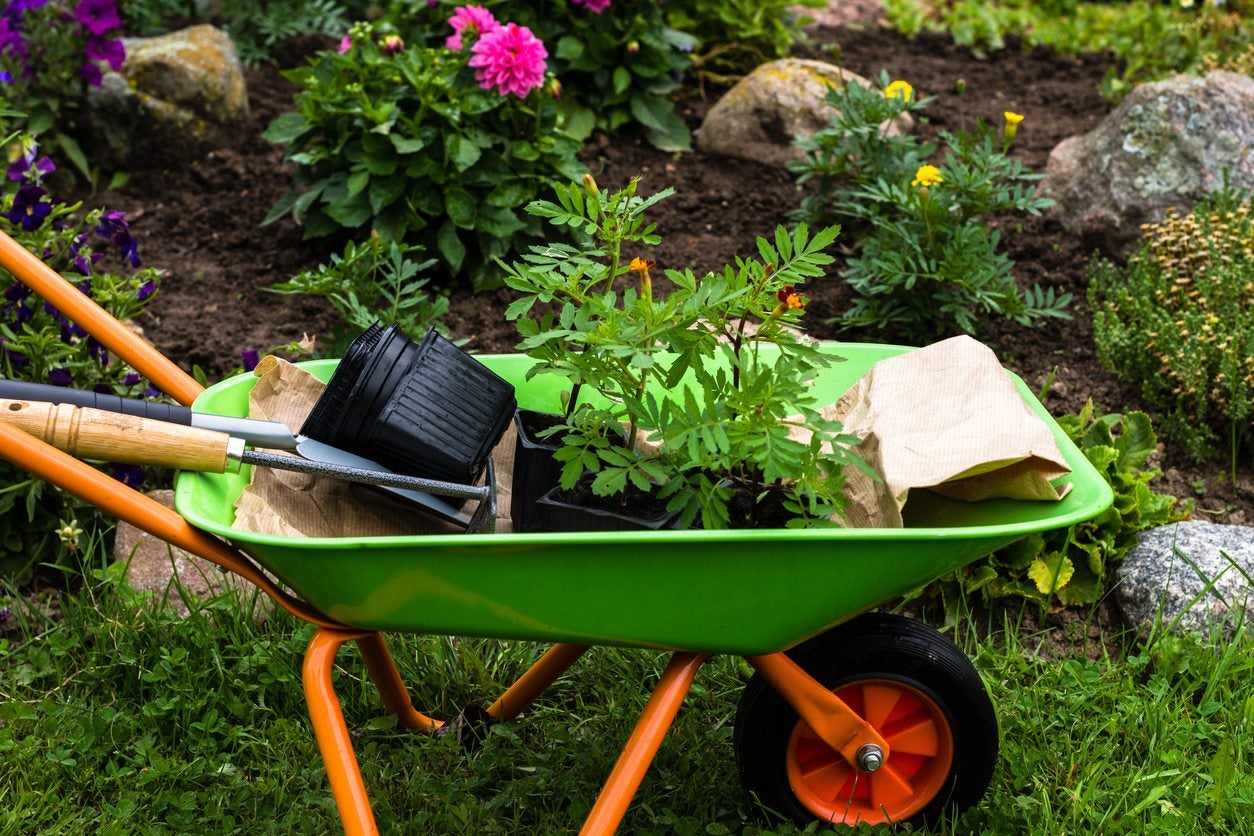Choosing A Wheelbarrow – Learn About Different Types Of Wheelbarrows


At some point, most gardeners will find that they need a wheelbarrow to complete certain garden tasks. Wheelbarrows are used for a variety of things, such as moving rock, mulch, or compost to the garden, moving trees or large shrubs from one spot to another, hauling bricks, disposing of garden debris, or even for mixing concrete or fertilizers.
Not all wheelbarrows are the same, though, so which type of wheelbarrow you should buy depends on the tasks you need it for. Continue reading to learn more about how to choose a wheelbarrow and the different types of this essential gardening tool.
Using Wheelbarrows in Gardens
With so many varieties available, choosing a wheelbarrow that properly suits your gardening needs is important. Generally, there are two types of wheelbarrow buckets to choose from: steel or plastic.
- Steel wheelbarrow buckets can bear more weight, but they can rust and are heavier to deal with. Steel wheelbarrows are used for heavy-duty jobs such as moving rocks, bricks, or large plants.
- Plastic wheelbarrow buckets are lighter, and they are usually less expensive than steel, but they can crack from too much weight, extreme temperature fluctuations, or improper handling. Plastic wheelbarrows are used for moving mulch, compost, garden debris, and smaller plants. Plastic is also better for mixing things like concrete or fertilizers and hauling cow manure, as these things can damage steel.
There are also wheelbarrows that hold different capacities or volume. In the U.S., these are usually available with a 2 square foot to 6 square foot (0.2 to 0.5 sq. m.) capacity, 3 square feet (0.25 sq. m.) being the most common. These wheelbarrows may also be labeled to carry 300 to 500 pounds (136-227 kg.). Elsewhere, wheelbarrows are often sold as holding 60 to 120 L., with 100 L. being the most common.
Just because a wheelbarrow label says it can hold 500 pounds (227 kg.) though, does not mean you have to fill it to the brim with rock or bricks. How much weight you put on your wheelbarrow will depend on your own strength.
While wheelbarrows are designed to make it easier to move and dump heavy items, a wheelbarrow full of rock or other heavy materials may be too heavy for many people to handle.
How to Choose a Wheelbarrow
Some other considerations when choosing a wheelbarrow are the handles and wheel(s). When you hear “wheelbarrow,” you probably picture the classic wheelbarrow with two straight handles, one wheel centered in the front and two supports spaced evenly at the back.
Sign up for the Gardening Know How newsletter today and receive a free copy of our e-book "How to Grow Delicious Tomatoes".
However, newer types of wheelbarrows may have ergonomic bar handles and/or two wheels. Wheelbarrows with one wheel are easier to dump and maneuver, but they can also tip over very easily while turning or dumping, or from imbalanced loads. Wheelbarrows with two wheels are less tippy but can be harder to turn and dump. Wheels are also available as regular air-filled wheels, like a bike or solid rubber wheels. Solid rubber wheels don't go flat or pop like air-filled wheels, but they also don’t have the shock absorption of air-filled wheels, making them harder to use on rough terrain.
The classic two-handled wheelbarrow is designed for good leverage. These handles are usually plastic, metal, or wood. Plastic handles can break from too much weight. Metal handles can get extremely hot from long periods in the sun. Wood handles can crack and splinter from too much weather exposure.
Two-handled wheelbarrows can also require a lot of upper body strength and cause shoulder, arm, and back pain. Ergonomic handles are often bar-type of handles, like a lawn mower. These bar-type handles are designed to cause less strain in the upper arms, but they can actually cause more back pain by having less leverage when dumping the load. Specialty slim-line wheelbarrows are also available for use in small, tight spaces.
There are also foldable canvas wheelbarrows available for easy storage. Of course, these canvas wheelbarrows cannot hold much weight. Take time to select the best wheelbarrow for your own needs. There are pros and cons to all the different types of wheelbarrows, so base your choice on what which seems easiest for you to use. To prolong the life of your wheelbarrow, always store it in a garage or shed between uses.
